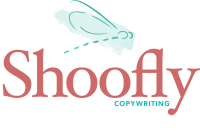Specialize
In order for your travel business to be successful, you need customers…preferably great customers. Defining your ideal traveler is the first step to generating qualified leads.
Sometimes people resist identifying a target market because they’re afraid of limiting potential business. But trying to market to every traveler out there is exhausting and ineffective. When you know your ideal customer, your marketing becomes easier, quicker and more cost-effective. It doesn’t mean these are the ONLY people you work with, they are simply the ideal group you serve.
So, how do you figure out your ideal traveler?
- Who do you like working with? What types of guests have been the most enjoyable?
- Who is a good fit for your agency, destination, or business?
- What do your travelers want? What drives them and impacts their decision to book with you?
- Where do they hang out online? How do you reach out to them and how do they reach out to you?
Once you have a broad idea of your ideal guest, think about one person or group in particular. Get specific about age, personality, lifestyle, socio-economic status, occupation, etc. As you do this, you will begin to get a clearer picture of the type of customer you want to attract.
And once you know who you’re trying to reach, you can tailor your marketing to speak straight to them. Because now you understand their desires, needs and problems. Now you know what solutions to offer them.
Personalize
What makes you unique? Once you know your ideal customers and what they need, determine why your business is the most qualified to meet those needs. What is your USP, or unique selling proposition? A USP guides your marketing techniques and messaging, your customer interactions, and even your branding.
To figure out your USP, think through the following questions.
- What problem do I solve?
- What am I doing that no one else is doing?
- What am I good at?
- Does my business have any distinctive benefits?
- What is my personality, and how can I convey that through my business?
Don’t make your USP just a commodity. Use it to hone in on your ideal traveler’s emotional gratification. Touch on their problems and desires. Make them believe that you are the only choice for them.
Customize
You have defined your ideal customers and their desires and problems. You know how to solve those problems with your unique selling proposition. Now it’s time to bring everything together with a SWOT analysis. SWOT stands for Strengths, Weaknesses, Opportunities and Threats.
- Strengths. What strengths and characteristics do you have that make you stand out from your competition?
- Weaknesses. Where can you improve? Look for areas in your business that customers may have questions or concerns about and address them.
- Opportunities. Are there any trends or changes in the travel industry that you could use to your advantage? Is there anything happening in your local market that you could use as a selling point?
- Threats. Are there any changes in the industry that could potentially hurt your business? What should you do to prepare for or avoid the threat? What obstacles do you face in growing your business?
What Now?
Using the strategies of specializing, personalizing and customizing, you have created a clearer picture of what you need to do to grow your business. Identify three to five goals that are specific and achievable. Come up with action steps to take in each area, and put them in a prominent place that you will see every day.

